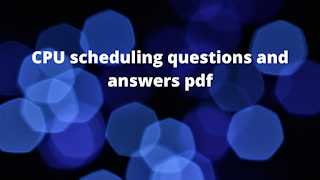File Management Questions and Answers pdf
File Management Questions and Answers pdf Define a File system? Files are managed by the operating system. The part of the operating system that deals with files are known as the file system. The major responsibilities of the file system are: How files are structured? How files are accessed and used? How files are protected? etc. What are File attributes? All operating systems associate the following information with each file, such as: Date and Time when the file was created or modified. Size of the file in bytes or KB or MB or higher memory units. Location of the file with the complete path on the storage media. Type of file. The Identifier, which identifies the file within a file system. The file name and the above-mentioned information about a file is known as attributes of the file. The attributes vary from one operating system to another. Describe the Direct Access Method? The direct access method is also known as the random access method. It is a very fast method to access ...






